I have a Jetty http server with some Jersey rest services. Those services are called from a React website that runs on a Node server.
Due to the cross origin nature of this setup, I had to add some HTTP headers. Basically, all my webservices return a createOkResult() which is created as follows.
@POST
@Path("orders/quickfilter")
@Consumes(MediaType.APPLICATION_JSON)
public Response getQuickFilterProductionOrders(String data)
{
...
return createOkResult(json.toString());
}
protected Response createOkResult(Object result)
{
return buildCrossOrigin(Response.ok().entity(result));
}
protected static Response buildCrossOrigin(Response.ResponseBuilder responseBuilder)
{
return responseBuilder.header("Access-Control-Allow-Origin", "*")
.header("Access-Control-Allow-Methods", "GET, POST, DELETE, PUT")
.allow("OPTIONS")
.build();
}
For the @GET webservices that works fine. But when I create an @POST service, I just can't get it working.
Webbrowsers (chrome and firefox) return these kind of errors:
Access to XMLHttpRequest at 'http://localhost:59187/rs/production/orders/quickfilter' from origin 'http://localhost:3000' has been blocked by CORS policy: No 'Access-Control-Allow-Origin' header is present on the requested resource.
So, at first sight I would be tempted to think that the headers are still missing. The thing is, when I test this service with a tool like Postman, then all headers turn out to be in place, and the service even returns the requested data.
This is a screenshot of a POST request.
From my front-end (which runs on the node server), I use the axios API, which uses promises, and my request looks like this:
const url = "http://localhost:59187/rs/production/orders/quickfilter";
const data = JSON.stringify(request);
const headers = { headers: { "Content-Type": "application/json" } };
const promise = axios.post(url, data, headers);
Right now I have a HTTP error 500, If I remove the content type header, I get an unsupported media exception. So, I have reasons to believe that the content type is ok.
